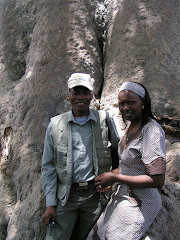The effects of witnessing violence on children have gross negative impact on their psychological development. This is a serious problem that requires more robust intervention and yet it has not been receiving much attention across the globe in the past. Unfortunately the literature on this issue has been largely limited to clinical descriptions of children's behavioral and emotional problems elicited primarily from assessment of children in women's shelters.
Most of these assessments used a standardized checklist which measures internalizing problems such as depression, somatic or physiological complaints, anxiety and withdrawal. In many instances, externalizing problems such as disobedience, destructiveness and aggression have not been coming very clearly in most of the available literature. However, some recent studies have improved methodologically by including suitable comparison groups as well as additional standardized measures.
More importantly, the studies have also considered examining a wider range of children's dysfunctional and adaptive behaviors. These studies represent the beginning efforts to document the effects of domestic violence on children's behavior, their cognitive and social problem-solving abilities. This also includes their coping and emotional functioning. A discussion of this literature in terms of age, stage of development and gender has been outlined below.
Here is short summary of the effects on children of either witnessing and/or being victims of domestic violence:
Infants
Infants are reactive to their environment; when distressed they cry, refuse to feed or withdraw and are particularly susceptible to emotional deprivation. They are extremely vulnerable.
Toddlers
Toddlers, who are beginning to develop basic attempts to relate causes to emotional expressions, can often be seen to have behavioral problems such as frequent illness, severe shyness, low self- esteem and trouble in daycare as well as social problems such as hitting, biting or being argumentative. Gender differences can emerge at this stage.
Preschool age
At preschool age, children believe that everything revolves around them and is caused by them. If they witness violence or abuse, they believe they have caused it. Some studies have shown preschool boys to have the highest ratings for aggressive behavior and the most serious somatic difficulties of any age group.
Primary school age children
Primary school age children, particularly in the latter stage, begin to learn that violence is an appropriate way of resolving conflict in human relationships. They often have difficulties with schoolwork and girls in this age group have been found to have the highest clinical levels of both aggression and depression.
Adolescents
Finally, adolescents see the violence as their parents' problem and they often regard the victim as being responsible. Ongoing conflict between parents has a profound influence on adolescent development and future adult behaviors, and can be the strongest predictor of violent delinquency.
It must be emphasized that, while there is no doubt that children who either witness and/or are victims of domestic violence are all affected in terms of their behavioral, cognitive and emotional adjustment, the research is still not conclusive enough to determine that there is a definitive set response for gender, age or stage of development. Unfortunately the sample sizes of some of the studies are also often not large enough to warrant firm conclusions being drawn. The inconsistencies suggest that there are still many more factors to be taken into account, including: the extent and frequency of the violence; the role of the child in the family; the number of repeated separations and moves; and economic and social disadvantage.
Conclusion
In conclusion, it should be noted that children's responses to witnessing and/or experiencing domestic violence between their parents vary considerably. No typical reactions emerge, even though there is sufficient evidence that exposure to domestic violence can and often detrimentally influence the children's behaviors. Nonetheless, at various stages of their development, children are able to understand and cope with what is happening between their parents.
For this issue to receive the attention it deserves there has to be linkages between domestic violence and child abuse. In spite of this, changes in definitions and parameters of child abuse and domestic violence, as well as legislative reforms, though necessary, are not sufficient to bring about a fundamental shift in the attitudes by members of the community at large. The is need for an integrated response from a wide variety of agencies such as the law enforcement agencies such as police, professionals such as social workers, lawyers and health workers. Teachers and the community members need to be informed and should be willing to be part of a joint effort to bring about some serious changes.
References:
Alexander, R. 1988, The Crimes (Family Violence) Act 1987. Law Institute Journal. March pp 166-169.
Ammerman, R.T. and Herson, M. (eds) 1990, Treatment of Family Violence, John Wiley and Sons, New York.
Blanchard, A., Molloy, F. and Brown, L. 1992, 'I Just Couldn't Stop Them': Western Australian Children Living with Domestic Violence: A Study of Children's Experiences and Service Provision, Curtin University School of Social Work, Western Australia.
Bowker, L.H., Arbittel, M. and McFerron, J.R. 1988, 'On the relationship between wife beating and child abuse' in: Feminist Perspectives on Wife Abuse, eds K. Yllo and M. Bograd, Sage, California.
Calvert, G. 1993, Preventing Child Abuse and Neglect: the National Strategy, National Child Protection Council, Canberra.
James, M. 1994, ‘Domestic Violence as a Form of Child Abuse: Identification and Prevention’. Issues in Child Abuse Prevention Number 2 July 1994
Carlson, B.E. 1984, 'Children's observations of inter-parental violence' in: Battered Women and Their Families, ed. A.R. Roberts, Springer, New York.
Christopoulos, C., Cohn, D., Shaw, D., Joyce, S., Sullivan-Hanson, J., Kraft, S. and Emery, R. 1987, 'Children of abused women: adjustmenet at time of shelter residence', Journal of the Marriage and the Family, vol. 49, pp. 611-19.
Church, J. 1984, Violence Against Wives: Its Causes and Effects, John Church (Publisher), Christchurch, New Zealand.
Cummings, E.M. 1987, 'Coping with background anger in early childhood', Child Development, vol.58, pp.976-84.
Cummings, E.M., Zahn-Waxler, C. and Radke-Yarrow, M. 1981, 'Young children's responses to expressions of anger and affection by others in the family', Child Development, vol.52, pp.1274-82.
Cummings, E.M., Iannotti, R.J. and Zahn-Waxler, C. 1985, 'Influence of conflict between adults on the emotions and aggression of young children', Developmental Psychology, vol.21, pp.495-507.
Davis, L. and Carlson, B. 1987, 'Observation of spouse abuse: what happens to the children?', Journal of Interpersonal Violence vol.2, no.3, pp.278- 91.
Subscribe to:
Post Comments (Atom)











1 comment:
I wonder how the ongoing domestic violence may impinge upon the behaviour of the child at later stage of life i.e adulthood.
Post a Comment